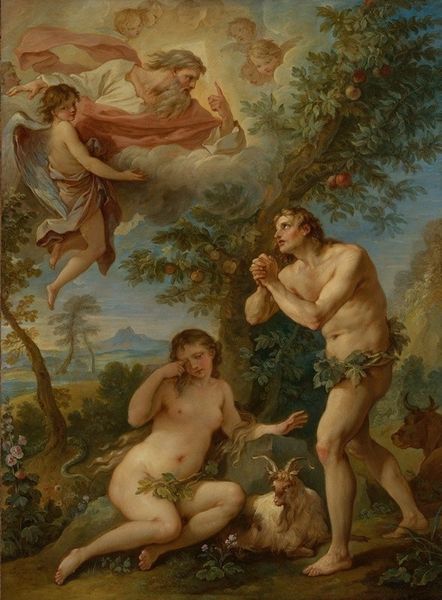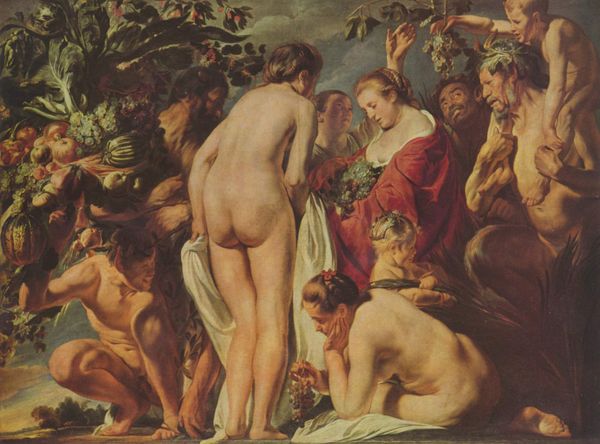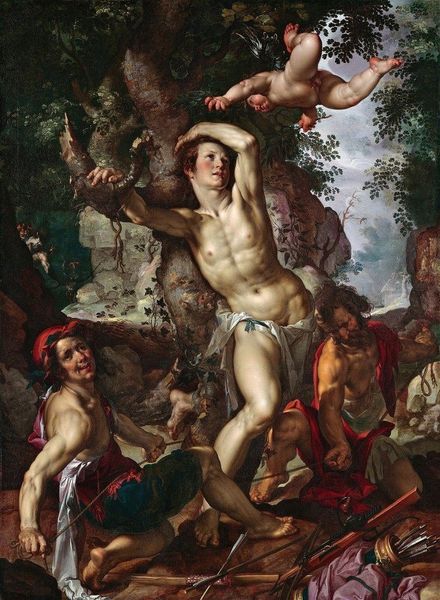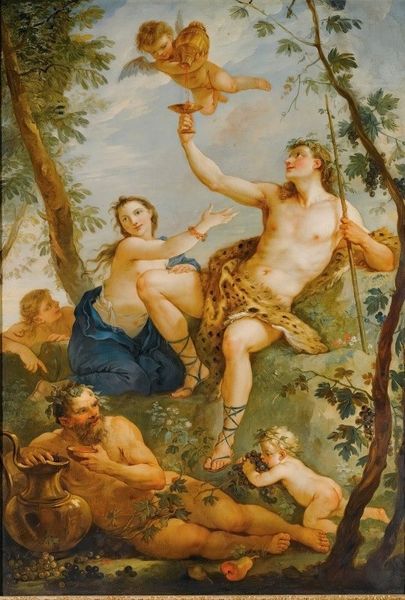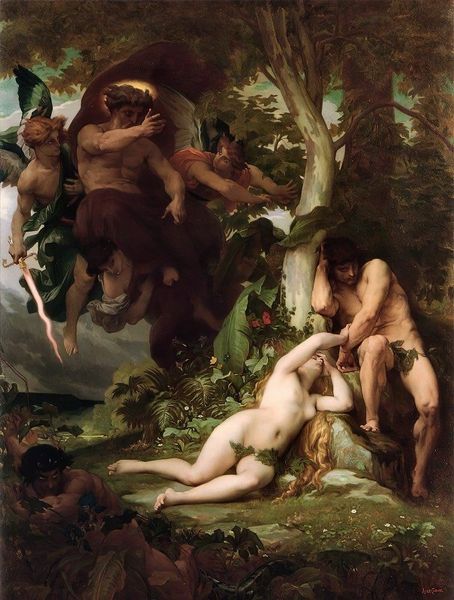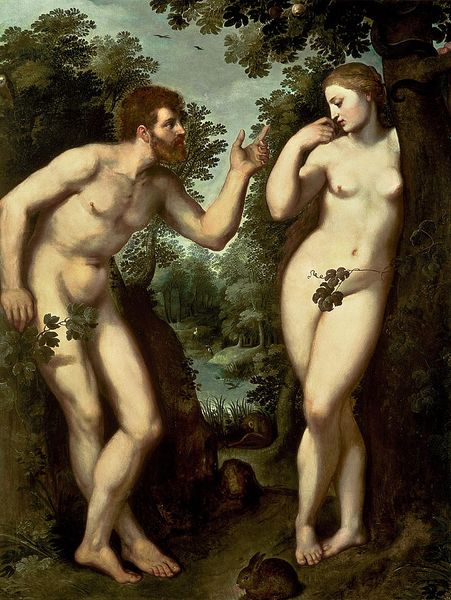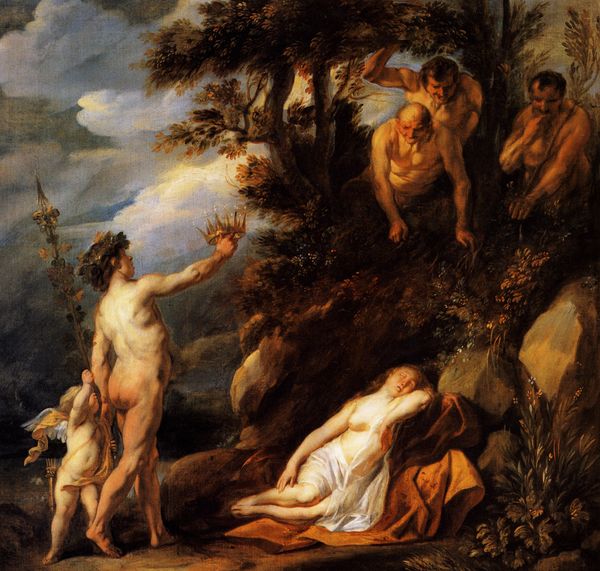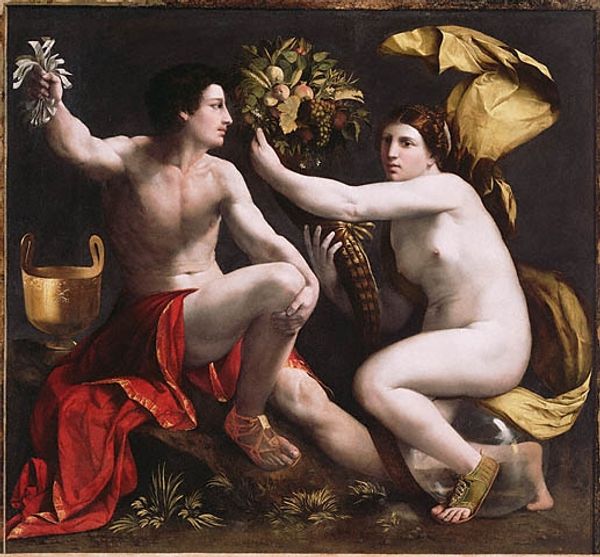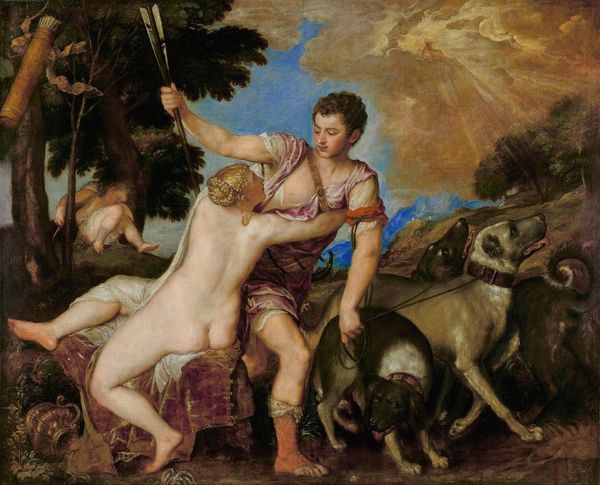
painting, oil-paint
#
allegory
#
baroque
#
painting
#
oil-paint
#
landscape
#
figuration
#
oil painting
#
portrait reference
#
history-painting
#
nude
Copyright: Public Domain: Artvee
Peter Paul Rubens painted "Adam and Eve" sometime in the early 17th century. It presents a pivotal scene from Genesis: the moment Eve accepts the forbidden fruit. Rubens was working in Antwerp, a city still recovering from the religious wars of the previous century. In this context, the painting participates in a visual culture grappling with sin, redemption, and human nature. Note the idealized, classical bodies and the rich, sensuous color palette typical of the Flemish Baroque style. The parrot, snake and other symbolic features point to the painting's engagement with theological debates of the time. Rubens, as a painter, benefited from powerful patrons and the institutional support of the Catholic Church. The painting is not so much a critique but a reflection of the religious and cultural values of his time. To fully understand the painting, one might consult theological texts, art historical scholarship on the Baroque period, and studies of the social and political context of 17th-century Antwerp. Only then can we appreciate the complex interplay of faith, patronage, and artistic expression that shaped this work.
Comments
No comments
Be the first to comment and join the conversation on the ultimate creative platform.


